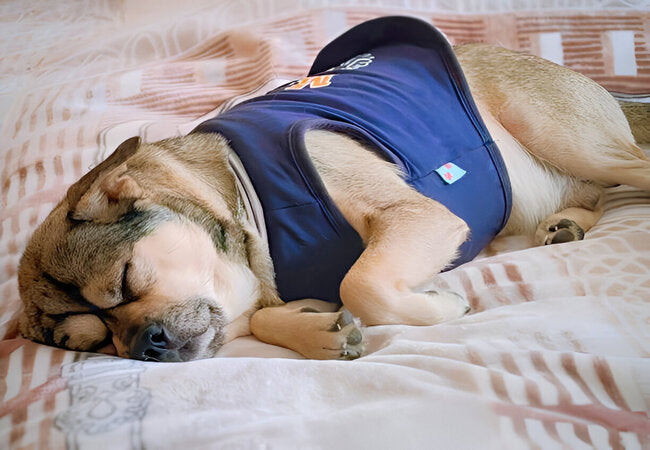2025 Vet Insight: Why Do Dogs Pant? Cooling, Emotions & Health🐶

In this article
2025 Vet Insight: Why Do Dogs Pant? Cooling, Emotion & When to Worry 🐶🌬️
By Dr. Duncan Houston BVSc
Hi there, I’m Dr Duncan Houston BVSc, veterinarian and founder of Ask A Vet. Panting is a natural canine behavior—but it also shields a variety of messages: from simple cooling to health concerns. This 2025 vet insight explores why dogs pant, how to recognize normal vs worrying patterns, what actions to take, and when vet attention is essential.
1. Normal Cooling Mechanism 🌡️
Dogs lack sweat glands across their body, relying on panting to dissipate heat. Rapid inhaling and exhaling humidifies air passageways and allows evaporative cooling, much like breathing over hot soup. Healthy dogs pant after play or on hot days; ensure access to water and shade.
2. Sign of Excitement or Thirst 💧
Panting often accompanies excitement, like greeting, car rides, or treats. It’s harmless if brief and paired with wagging or playfulness. Offer cool water and watch for calming.
3. Emotional Stress or Anxiety 😟
Stress panting appears with signs like pacing, yawning, lip licking, wide eyes, or avoidance behaviors. It commonly surfaces during vet visits, thunderstorms, or separation anxiety. Support with a calm voice, safe spaces, and possibly guided training.
4. Pain or Discomfort ⚠️
Unexpected panting, especially when resting or at night, can indicate pain, from arthritis to internal discomfort. Look for other pain cues like limping, restlessness, biting, or whining. Veterinary evaluation may be needed.
5. Breeds with Breathing Challenges 🐾
Brachycephalic breeds (e.g., Bulldogs, Pugs) have compressed airways, leading to frequent panting and heat sensitivity. Monitor carefully for labored breathing, especially in heat.
6. Excess Weight & Age-Related Changes 👵
Obesity burdens the cardiovascular and respiratory systems, causing panting even at rest. Older dogs may pant more due to arthritis, sensory decline (hearing/vision), or age-related ailments.
7. Medical Problems: When to Worry 🚨
- Heatstroke: Heavy panting plus drooling, reddened gums/tongue, lethargy, collapse—emergency.
- Heart or lung disease: Conditions like heart failure, pneumonia, and pulmonary issues often trigger persistent panting, coughing, or shallow breathing.
- Allergic reactions or poisoning: Panting with pacing, drooling, swelling, vomiting may signal serious illnesses—seek veterinary care immediately.
- Endocrine disorders: Cushing’s disease often increases panting, along with appetite changes, skin/performance alterations.
8. Red Flags: When Panting is Abnormal
Be alarmed by:
- Continuous panting in cool, calm environments
- Labored, noisy breathing; extended neck or abdomen motion
- Paired symptoms: pacing, vomiting, drooling, collapse
- Changes in gum color (pale, blue, deep red)
- Weakness, loss of appetite, lethargy, cough
9. How to Comfort Your Panting Pup
- Cool down: water, shade, cool towels—avoid ice-cold water.
- Calming techniques: soothing voice, gentle touch, fan, quiet surroundings.
- Remove stress triggers or heat sources.
- Monitor and record panting patterns, especially any changes.
- Seek vet advice—especially if panting changes or red flags appear.
10. FAQs on Panting ❓
- Q: My dog pants at night—is it normal?
- A: Occasional panting after dreaming is fine. Persistent night panting might signal stress, respiratory pain, or cardiac issues—consult your vet if concerned.
- Q: Heavy panting but dog seems fine?
- A: Could mean heat, excitement, or steroids meds. Check overall behavior; use comfort methods. Persisting? Veterinary review is best.
- Q: Breed-specific panting is normal?
- A: Yes for short-faced breeds—but noisy, labored breathing or overheating risk needs vet attention.
🔧 Ask A Vet Tools & Support
- 📹 Upload panting episode videos for expert review
- 🧠 Access guidance on stress reduction, weight, and lifestyle adjustments
- 📈 Track panting patterns, timing, triggers, and associated behaviors
- 🏥 Book vet check-ins to rule out heatstroke, respiratory, cardiac, or endocrine concerns
🩺 Final Vet Reflection
Panting speaks volumes—from joyful excitement and necessary cooling to signs of stress, pain, or illness. By observing the context, supporting with comfort strategies, and acting when red flags appear, you help safeguard your dog's well‑being. If panting patterns shift or concern you, Ask A Vet is ready to help you respond with confidence and care. 🐾❤️






